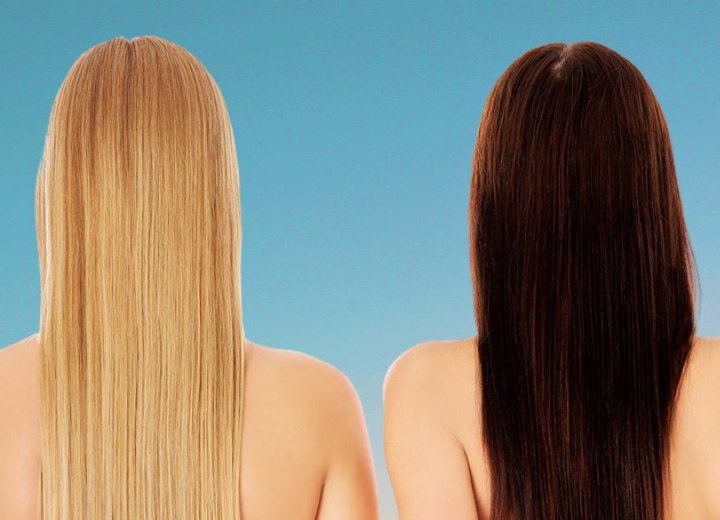Color Hair from Light to Dark

The concept of going dark when you have lighter hair may seem like a breeze. You buy boxed color from the drugstore that seems to match what you are looking for, go home, and BOOM… you are a fabulous brunette. Unfortunately, it doesn't work that way and it's not nearly that easy. If it were, all salons would be out of business.
As with lightening your hair, you should have a couple of darker shades in mind, just so that you know what you want to present to the stylist. Yes, you will want to go to a stylist to make this transformation as this process can go awry upon trying it at home.
Go to your local wig shop or use an online hair app and try on a few different hair colors, ranging from lighter to darker and take some screenshots to help you decide which one will be the best look for you. Now that you have done that, it is time to contact your stylist to prepare to go to the darker shade.

If your hair has been previously processed, especially bleached, the ends of it will not absorb the darker colors the way that the rest of your hair will and it will be a disaster. Green and gray tones could be the end result of home coloring because bleaching can cause transparency at the ends and will most often lead to an uneven overall color that will require further color modification.
Much like bleaching, dark colors contain a certain chemical (PPDA/pPD, also known as p-phenylenediamine) that can cause an allergic reaction to both the scalp and the skin. Your stylist will want to do an allergy test prior to coloring. This will ensure that you do not end up extremely uncomfortable. But remember, allergic reactions are quite common, which is why it is best to find out before you cover your whole head with dye.

The next step will be the true start of properly achieving the darker shade that you want, adding some natural honey or caramel tones to balance it out. Unless you are going super dark, like black, which you must keep in mind, cannot be reversed safely the next day. Once you commit to dark, you have to let your hair rest for a little while before even thinking about going light again because this could literally make your hair break off and there is no going back from that.
After you have completed the "going darker" process, try to wait a few days before you wash your hair to avoid anything harsh that can be found in some shampoos that can also strip the color away. You have worked so hard to get here, and you don't want to ruin it because of one mistake, do you? It is suggested that you wash your hair just a few times per week while making sure you are using a great conditioning mask to attempt to heal and repair any damage.

So, just remember this: no matter if you have or have not colored your hair in the past, going from light to dark needs to be a professional process. You will be making just as big of a commitment as going light, so be ready for the upkeep and maintenance and to visit the salon a few times before you achieve the perfect color.
Impatient? Maybe consider some overall honey and chestnut lowlights to get used to being on the dark side. There are so many amazing darker colors on the spectrum that you might become addicted to trying them all, and fortunately, your stylist will be more than willing to work with you to achieve the best possible outcome. Have fun and welcome to the dark side!
©Hairfinder.com
See also:
Comparing Hair Colors
Color Hair from Dark to Light
Psychology of Hair Colors
